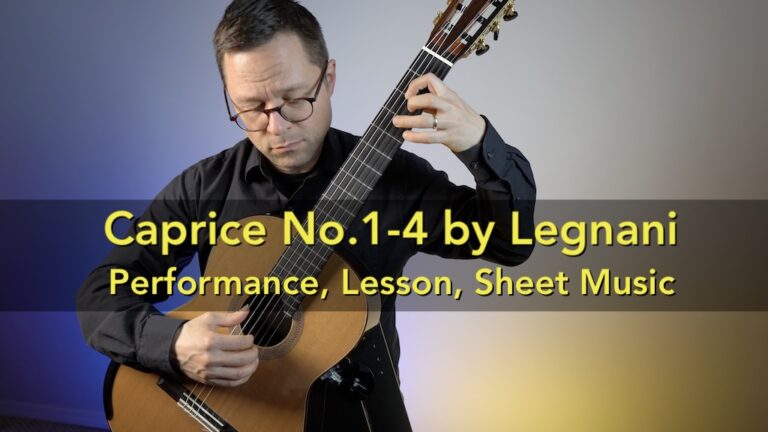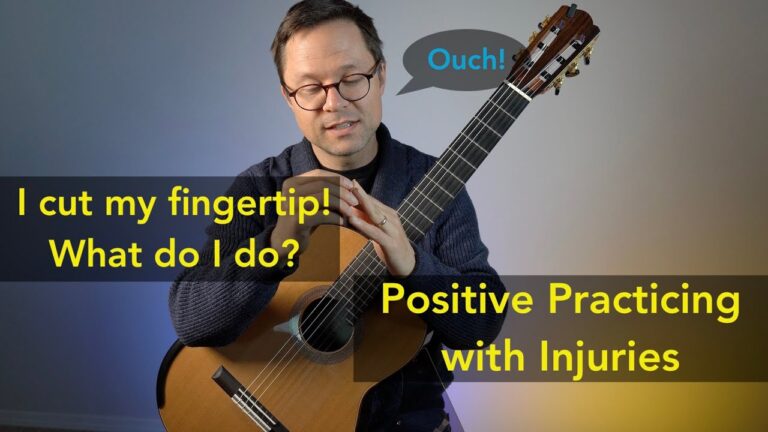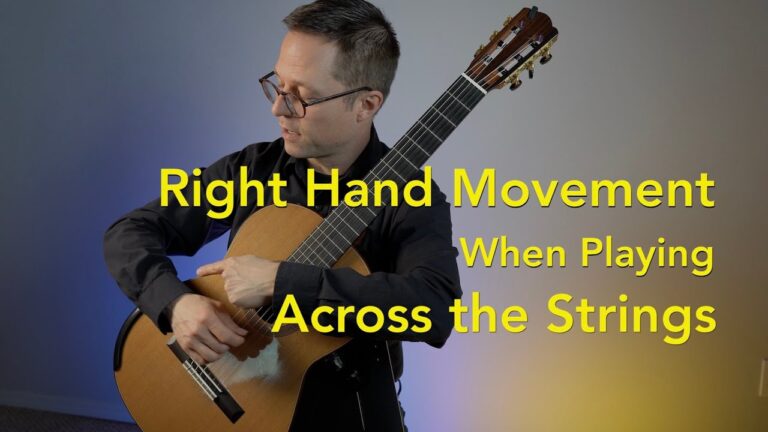Nocturne Op.4, No.3 Maestoso-Vivace by Johann Kaspar Mertz (1806-1856) – PDF Sheet Music and Free Video Lesson for Classical Guitar. This performance and lesson comes from my book Classical Guitar Repertoire Lessons Grade 6 – Five pieces at the grade six level with dedicated lessons preparing you for each piece.
Jump to a section: Intro (3:33), Arpeggios (5:40), Bars 11 & 19-21 (9:57), Walk-Through (13:58).
There are no new techniques to learn for this Nocturne (night music). It’s also not a particularly difficult piece when played at a slow tempo. However, once you approach faster tempos for the Vivace (fast) section you may find this piece a good challenge. The introduction is marked as Maestoso which is an indication to play in stately, dignified, or majestic fashion. You can play this with a relatively slow tempo but fast enough to keep the phrase moving forward. Add a little rubato, a push and pull to the rhythm, for expressive effect. When you reach the vivace section, aim for a steady and fast dance feel of two beats per bar. More musical ideas will be covered in the video lesson. There are a few triadic arpeggios in this work which can serve as an excellent technique preparation for arpeggios, shifts, and jumps across the fretboard. Here’s the YouTube link if you want to watch it there.





I am also very very pleased with your wonderful lessons, Bradford. You are my main classical guitar teacher! I am now working with the last lesson in your Level 5 & 6 book, Nocturne Op. 4, No. 3 by Johann Kaspar Mertz and have one question: In the musical notation there are many rests markings in the bass line, for example in bar 9, 10, 14, 15, 16 etc.. But you don’t dampen the bass tones in your performance and you don’t comment on it either. Can you say a little about this, both in the Nocturne by Kaspar Mertz and in general?
Dag51
Good question, I’ll address it when I make a new video for it one day. I could go either way with muting in this particular piece. I think for the grade 6 student there is plenty to focus on without muting and the sustain can help carry the student along nicely. It might also hold student’s tempos back a bit and not let them “let loose” with the piece. Lots of students need ‘a win’ and an exciting piece so I sometimes will relax on articulation to give them that win (and this is a good one for that).
That said, yes, muting on the rest (in the Vivace) could be very interesting and energizing for the piece. There is an awful lot of it though which is another reason I decided to sustain. You could certainly mute all the time or choose sections to articulate based on personal preference or when you think it would add to the composition. It would cool if I record it both ways in the future and let students choose. The best course of educational awareness is to try it both ways (as always)!
I am nearing the end of Level 5 and will soon begin level 6. What will be the path forward after level 6? I always look forward to your wonderful lessons. Thanks for sharing your knowledge of classical guitar with us all.
Have you seen my educational curriculum and outline?
I have decided to remain at grade 6 for now and to perfect some of the pieces you include at grade 5 and 6 rather than push on to grade 7. I really think many of those pieces you suggest are beautiful. I will also work on Carcassi etudes and more practices from your technique book. That should keep me busy for at least another year or 2. Thanks for your advice.